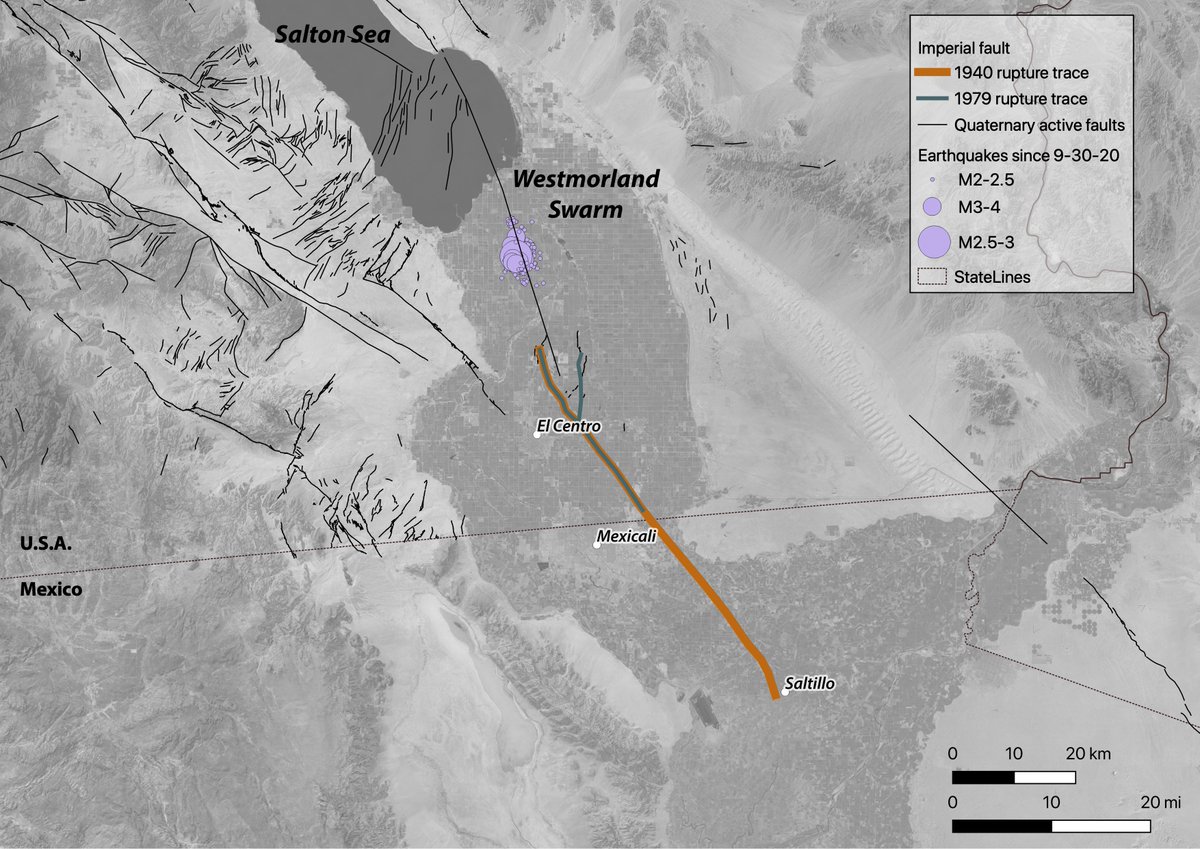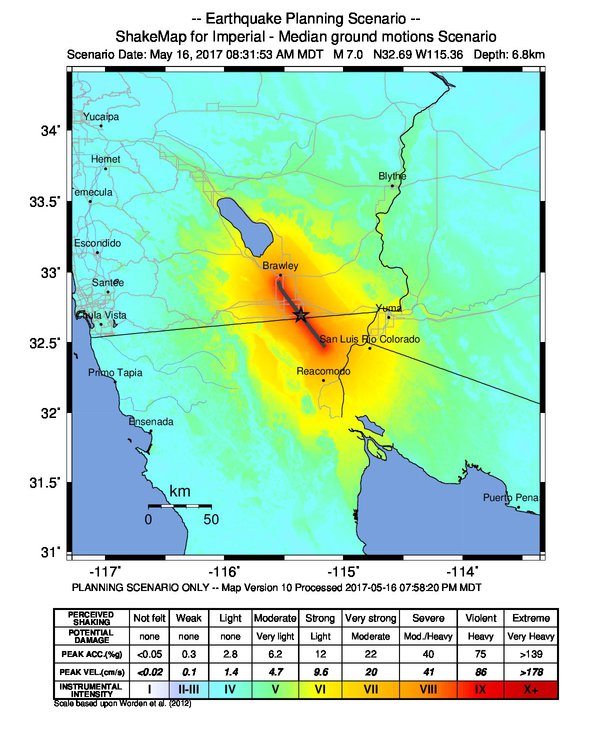Yes, swarms aside, it is still Friday, and on this channel, that means #FaultFriday. To learn more about the area around the Westmorland swarm, let’s look at the Imperial fault of southern California today.
The Imperial fault is a right-lateral strike-slip fault ( http://ow.ly/gKEq50BIfDq )">https://ow.ly/gKEq50BIf... that runs south of the Salton Sea, across the US-Mexico border, and into Mexico. The Imperial fault had two significant earthquakes in the 20th century, a M6.9 in 1940 and a M6.5 in 1979.
Before the 1940 El Centro event, this fault probably did not have an earthquake in the previous 300 years. Geologists can literally uncover the history of past earthquakes along a fault by digging a shallow trench across a fault and observing and dating the offset layers.
The Imperial fault is part of the San Andreas fault system and overall Pacific-North America plate boundary. The Imperial fault transfers slip from the spreading occurring in the Gulf of Mexico and plate boundary faults in Mexico onto the San Andreas system.
The Westmorland swarm has been occurring to the north of the Imperial fault. This swarm is rupturing in an area typical of swarms, perhaps because of thin crust here and high heat flow given the seafloor spreading in the Gulf of California.
Here is a scenario event (this event has not occurred!) for shaking that could result from an M7 event on the Imperial fault. MMI>VII is expected close to the fault. Weak to light shaking would be expected >100 km from the epicenter. -- https://abs.twimg.com/emoji/v2/... draggable="false" alt="🐋" title="Wal" aria-label="Emoji: Wal">
https://abs.twimg.com/emoji/v2/... draggable="false" alt="🐋" title="Wal" aria-label="Emoji: Wal">

 Read on Twitter
Read on Twitter
 " title="Here is a scenario event (this event has not occurred!) for shaking that could result from an M7 event on the Imperial fault. MMI>VII is expected close to the fault. Weak to light shaking would be expected >100 km from the epicenter. --https://abs.twimg.com/emoji/v2/... draggable="false" alt="🐋" title="Wal" aria-label="Emoji: Wal">" class="img-responsive" style="max-width:100%;"/>
" title="Here is a scenario event (this event has not occurred!) for shaking that could result from an M7 event on the Imperial fault. MMI>VII is expected close to the fault. Weak to light shaking would be expected >100 km from the epicenter. --https://abs.twimg.com/emoji/v2/... draggable="false" alt="🐋" title="Wal" aria-label="Emoji: Wal">" class="img-responsive" style="max-width:100%;"/>


